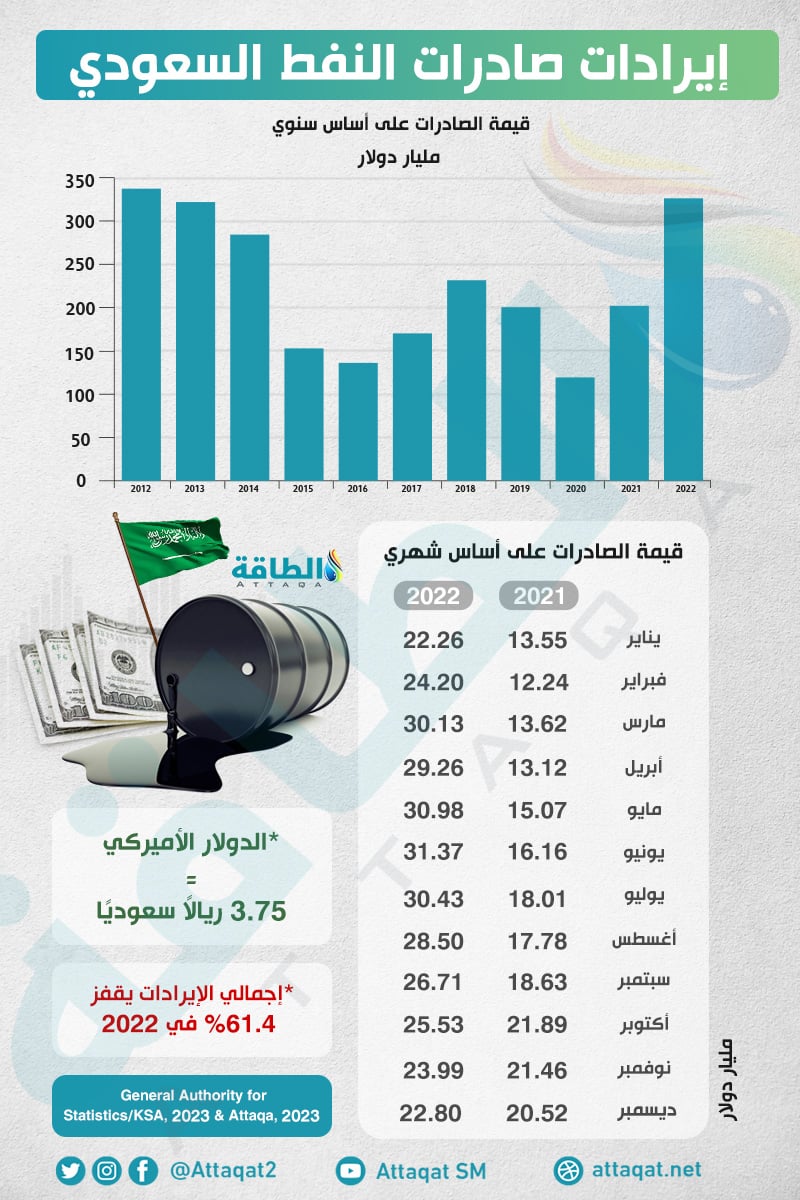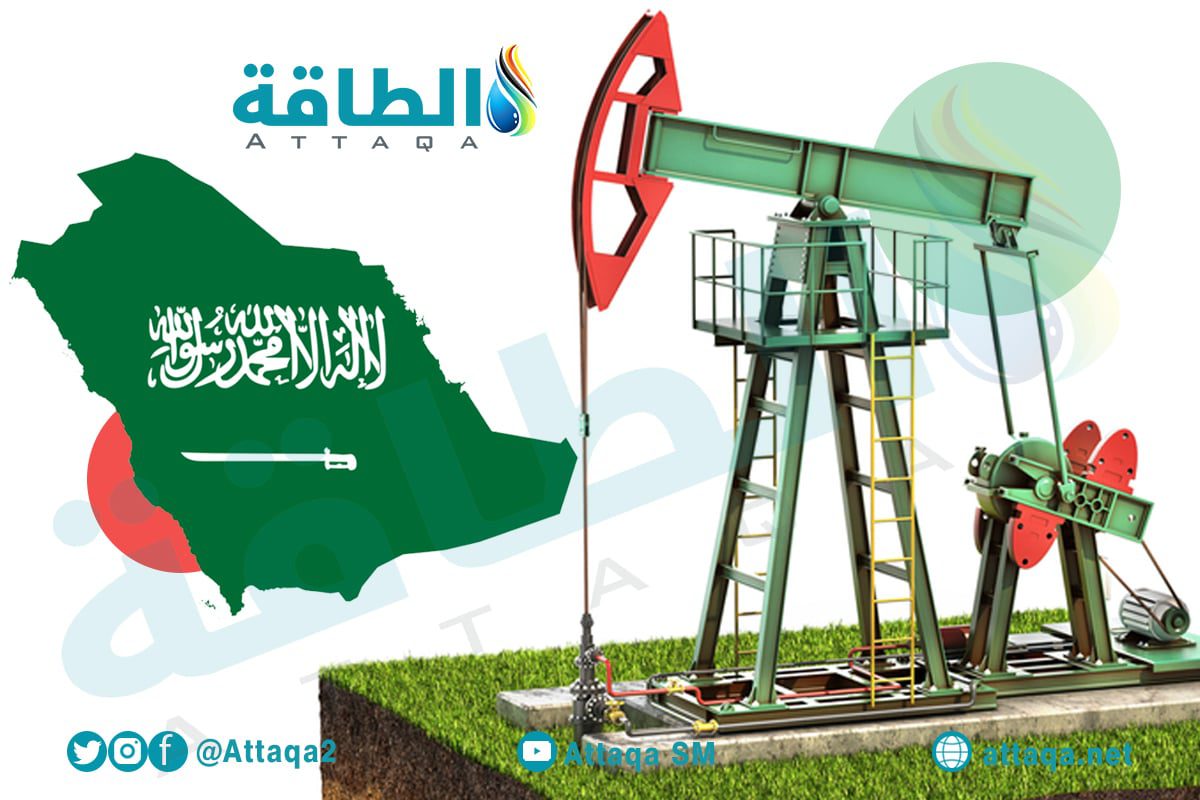Saudi oil revenues in the first quarter of 2023 were affected by the decline in crude prices, as they recorded a decrease of about 3% compared to the same period of 2022.
Official data revealed that Saudi Arabia’s income from oil revenues in the period from January to the end of March (2023) recorded 178.6 billion riyals ($47.62 billion), compared to 183.7 billion riyals ($48.98 billion) for the same period of 2022.
The Ministry of Finance’s report on the performance of public finances in the first quarter of 2023 showed that Saudi Arabia’s budget recorded a deficit of 2.9 billion riyals ($0.77 billion) in the first quarter.
Saudi oil revenues supported the budget in 2022, recording the first surplus since 2013, at a value of 102 billion riyals ($27.13 billion), according to official data seen by the specialized energy platform.
Saudi budget 2023
Saudi budget revenues in the first quarter of 2023 amounted to about 280.9 billion riyals ($74.90 billion), while expenditures recorded 283.9 billion riyals ($75.70 billion).
The deficit in the budget for the first quarter of 2023 came as a result of an increase in revenues at a rate less than the rate of increase in expenses, as revenues increased by 1%, compared to a 29% increase in expenses compared to the same period last year.
The increase in exchange levels comes to achieve the targets and continue the financial reforms, according to the data seen by the specialized energy platform.
Oil prices
Saudi budget revenues increased to 280.9 billion riyals, compared to 278 billion riyals ($74.13 billion) in the first quarter of 2022.
The rise came despite the decline in oil prices compared to the same period of the previous year, as Brent crude fell by 7.1% during the first quarter of 2023, to reach $ 79.77 a barrel by the end of March 2023, despite production cuts by the OPEC + alliance.
And at a time when Saudi oil revenues decreased slightly in the first quarter of 2023, the “Kingdom’s Vision 2030” programs – supporting the non-oil sector and diversifying sources of income – succeeded in playing a prominent role in raising non-oil revenues in the first quarter of 2023 by 9%, recording 102.3 billion. Riyals ($27.28 billion) compared to 94.3 billion riyals ($25.14 billion) for the same period of 2022.
And the Saudi budget for 2023 expected a decline in oil revenues by 12.1% during the current year, amid indications of a decline in average oil prices compared to last year.
The value of Saudi oil exports rose during the past year to $326.16 billion, compared to $202.05 billion in 2021, supported by the rise in oil prices, which reached record levels during the first half as a result of the Russian-Ukrainian war, before its gains were curtailed at the end of the year.
The following infographic, prepared by the specialized energy platform, reviews the most prominent figures on Saudi oil exports in 2022:

non-oil revenues
Non-oil revenues compensated for the decline in oil revenues, and the total revenues increased by 1%. As a result, the share of non-oil revenues increased to 36% of total revenues in the first quarter of 2023, compared to 34% in the same period of 2022.
Non-oil activities achieved a growth of 5.8% in the first quarter of 2023, by focusing on them and aiming for them to be the locomotive of the local economy, and for the non-oil sector’s contribution to the GDP to rise to 65% by 2030.
The Kingdom’s expansionary fiscal policy continued within its economic reform program, as expenditures increased by 29%, recording 283.9 billion riyals in the first quarter of 2023, compared to 220.5 billion riyals ($58.80 billion) in the same period of 2022.
Capital spending increased by about 75%, recording 26 billion riyals ($6.93 billion), compared to 14.8 billion riyals ($3.95 billion) for the same period of 2022.
While operating spending increased by 25%, driven by the increase in exchange for goods and services, which increased by 70%, to reach 54.1 billion riyals ($14.43 billion) compared to 31.8 billion riyals ($8.48 billion), as this represents the value of goods and services purchased by the government for use. in the productive process.
related topics..
Also read..

Leave a Reply